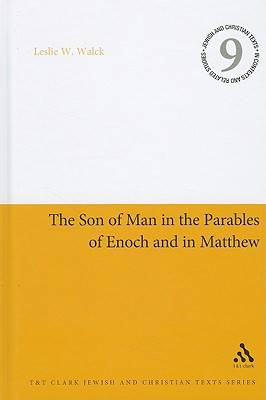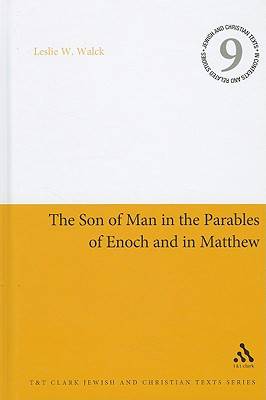
- Retrait gratuit dans votre magasin Club
- 7.000.000 titres dans notre catalogue
- Payer en toute sécurité
- Toujours un magasin près de chez vous
- Retrait gratuit dans votre magasin Club
- 7.000.0000 titres dans notre catalogue
- Payer en toute sécurité
- Toujours un magasin près de chez vous
Description
This book examines all the relevant passages containing the Term "Son of Man" in both Matthew and the Parables of Enoch. Depictions of the Son of Man in the Gospel of Matthew and in the Parables of Enoch ( Par. En.) raise questions about their relationship. The meaning and origin of the term "Son of Man" are discussed, as well as the possible influence of Par. En. on Matthew. Literary, Redaction, Sociological and Narrative criticisms are employed. Introductory questions of date, provenance and social setting are addressed for both Matthew and Par. En. Dates as early as the early second century bce and as late as the late third century ce have been proposed for Par. En., but a consensus seems to be growing for the late first century bce. Therefore Matthew could have known Par. En. Sociological methodologies reveal that the author and audience of Par. En. may have been members of an ousted ruling elite, opposed to the current administration, and yearning for a just reversal of fortunes.Sets of characteristics of the Son of Man in Par. En. and Matthew are developed, and the term is examined briefly in the other Gospels. Then the two sets of characteristics are carefully compared. Similarities in vocabulary as well as in the pattern of relationships prove to be intriguing, showing that Matthew and Par. En., in contrast to other writings, share a unique conception of the judgment scene focussed on the Son of Man as eschatological judge. This suggests quite strongly the shaping of Matthew's concept in the direction of Par. En.
Spécifications
Parties prenantes
- Auteur(s) :
- Editeur:
Contenu
- Nombre de pages :
- 288
- Langue:
- Anglais
- Collection :
- Tome:
- n° 22
Caractéristiques
- EAN:
- 9780567027290
- Date de parution :
- 14-04-11
- Format:
- Livre relié
- Format numérique:
- Genaaid
- Dimensions :
- 152 mm x 226 mm
- Poids :
- 498 g

Les avis
Nous publions uniquement les avis qui respectent les conditions requises. Consultez nos conditions pour les avis.






